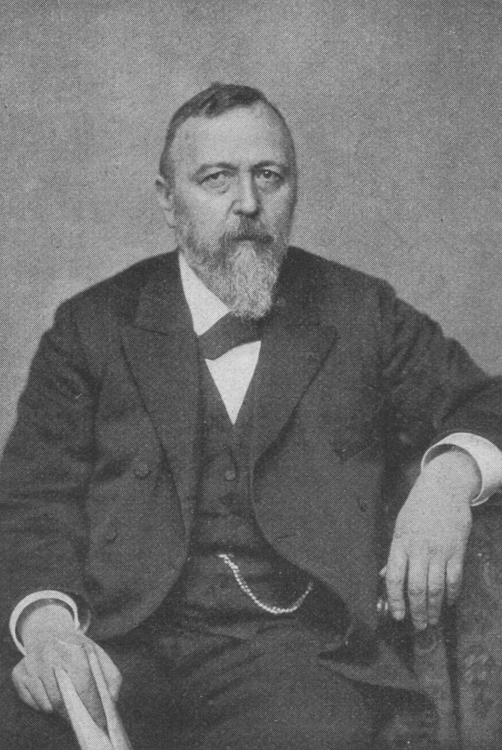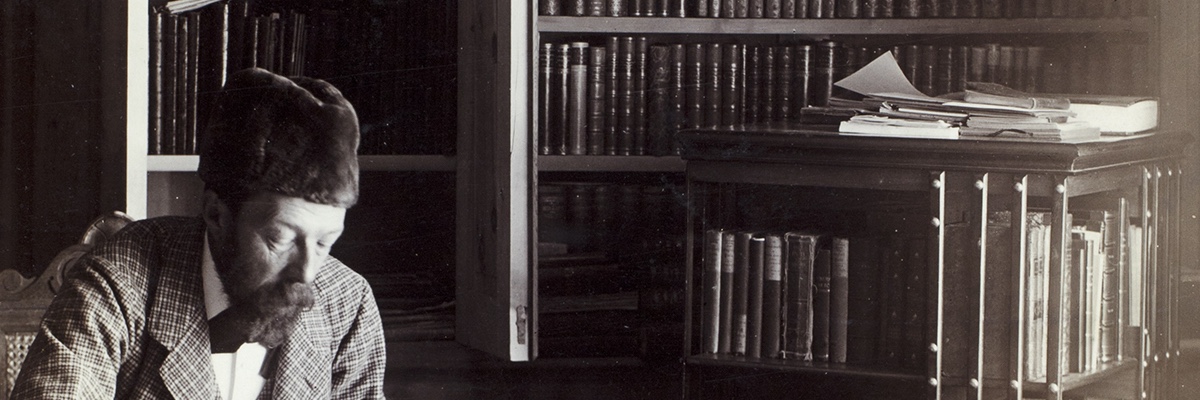In the opening sentence of chapter 2 of his Memoirs, John Addington Symonds explicitly presents his wish to produce an extended sexual case study of himself. The remainder of chapter 2 is devoted to describing his sexual development before the age of eleven. In addition to calmly reflecting on “what [he] know[s] to be absolutely certain facts,” Symonds constantly considers the reasons behind those superficial phenomena (101). Since he recognizes sexuality as “essentially important in the formation of character and the determination of mental qualities,” he is eager to know why his emotions are directed to the male sex (99). He is unable to provide himself with a satisfying answer. Therefore, by labeling chapter 2 as “Containing Material Which None But Students of Psychology and Ethics Need Peruse,” he implicitly claims his status as someone who can write for experts in the hope of finding a better answer from them.
Psychology as a medical specialty had begun to develop in the middle of the 19th century. Symonds managed to gain a deeper insight into what he called his “problem” by studying cases of sexual inversion documented by continental sexologists, including some written after he first drafted the chapter. However, we know from an addendum to chapter 2 that, although some ideas of these continental sexologists resonated with Symonds, his “problem” was still unsolved. Symonds paid special attention to the probable innate character of the origination of “abnormal sexual feelings” with reference to Krafft-Ebing, an Austro-German psychiatrist and author of the foundational work Psychopathia Sexualis (1886). Krafft-Ebing created categories of inversion and argued that they were caused by internal as well as external factors. In his Memoirs, Symonds reviews his family health history: “My mother’s family on the paternal side (Sykes) was tainted with pulmonary phthisis, and on the maternal side (Abdy) with extreme nervous excitability, eccentricity, even madness” (102). He then arrives at the conclusion that Krafft-Ebing and his school would recognize hereditary neuroticism in him, which predisposes its subject to sexual inversion. However, Symonds apparently does not find this explanation satisfying. I think what hinders Symonds’ acceptance of Krafft-Ebing’s perception of sexual inversion lies partly in his delicate pride in his literary achievement. Symonds attributes his literary achievement partly to “a high degree of nervous sensibility” and questions the rationality of classifying “poets, men of letters painters, almost all of whom exhibit some nervous abnormalities, with the subjects of hereditary disease” (103). I will explore other reasons for his disagreement with Krafft-Ebing in the following paragraphs.

Symonds developed his rejection to Krafft-Ebing’s theory of sexual inversion more thoroughly in Chapter 7 of A Problem in Modern Ethics (1891). In this chapter, Symonds confined his review of medical literature on sexual inversion to what he considered as “the most recent, most authoritative, and…upon the whole most sensible studies” (143). Therefore, despite his disagreement with Krafft-Ebing, Symonds gave credit to Krafft-Ebing’s contribution to this field of studies. Symonds presented a scheme of Krafft-Ebing’s subdivision of subjects of sexual inversion under the form of a table:

Krafft- Ebing’s Analysis of Sexual Inversion. John Addington Symonds. “A Problem in Modern Ethics”. 1981.
According to Symonds, Krafft-Ebing summarizes from his case studies two causes, both necessary but neither sufficient alone, for “acquired” sexual inversion: “morbid predispositions inherited by the patient” and “onanism as the exciting cause of the latent neuropathic ailment” (151-2). Symonds only agrees with Krafft-Ebing’s conception of the “episodical type”: “[Krafft-Ebing] discusses a few cases in which it seems that sexual inversion displays itself episodically under the conditions of a psychopathical disturbance…the details show that the subjects were clearly morbid. Therefore, they have their value for the building up of a theory of sexual inversion upon the basis of inherited and active disease” (156-7). However, Symonds takes issue with the “persistent” type.
In general, Symonds criticizes Krafft-Ebing’s theory for being so constructed that it is almost impossible to be disproved, given that Krafft-Ebing identifies the concurrence of “hereditary taint” (hereditary disease) and onanism as a necessary rather than a sufficient condition for sexual inversion. Symonds writes,
Considering the frequency of both hereditary taint and onanism in our civilization, this is not risking much.
(“A Problem in Modern Ethics,” 155)
However, Symonds is unwilling to ascribe what he commonly observed in his civilization, i.e., hereditary taint and onanism, to ancient Greece–which he deeply admires. He feels it “absurd” to maintain, according to Krafft-Ebing’s theory, that all the boy-lovers in ancient Greece, where sexual inversion had been permanently established and recognized and was all but universal, “owed their instincts to hereditary neuropathy complicated by onanism” (154).
In response to the first cause for acquired sexual inversion, Symonds objects,
At what point of the world’s history was the morbid taste acquired? If none but tainted individuals are capable of homosexual feelings, how did these feelings first come into existence?
(“A Problem in Modern Ethics,” 154)
Krafft-Ebing’s theory, Symonds argues, could not answer this question. On the other hand, Symonds casts doubt on the second cause primarily with reference to facts. Although masturbation or some form of sexual inversion could be found, according to Symonds, in both public and private schools in all parts of Europe, he observes that “few of the boys addicted to these practices remain abnormal after they have begun to frequent women” (153). Moreover, Symonds claims that “common experience shows beyond all doubt that young men between 16 and 20 give themselves up to daily self-abuse without weakening their appetite for women” (155). Therefore, Symonds finds Krafft-Ebing’s reasoning that onanism leads to hyper-sensibility in the sexual apparatus and partial impotence, therefore leading to demands for sexual gratification from men, even in the face of legal prohibition, very unconvincing.
Symonds takes the aforementioned counterargument to the innate character of sexual inversion with him when he proceeds to review what Krafft-Ebing categorizes as congenital sexual inversion. In addition, Symonds feels that he himself has nowhere to stand in Krafft-Ebing’s categories. Krafft-Ebing defines the four subdivisions of congenital sexual inversion as follows:
1) Psychopathic Hermaphrodites, born with a predominant inclination toward persons of their own sex, possessed rudimentary feelings of a semi-sexual nature for the opposite;
2) Male Habitus (Mannlinge), a subdivision of Urning (true homosexual individuals in a strict sense), did not differ in any marked or external characteristics from the type of their own sex;
3) Female Habitus (Weiblinge), a subdivision of Urning, altered their character, mental constitution, habits, and occupations according to their predominant sexual inversion, but still remained in their physical configuration of their own sex;
4) Androgyni, modified the bony structure of the body, the form of the face, the fleshly and muscular integuments to an obvious extent according to their predominant sexual inversion.
“In this characterization,” Symonds wrote, “I have overpassed the limits of the fifteen cases presented by Krafft-Ebing” (160).

Why does Krafft-Ebing’s theory centering around a neuropathic hereditary bias put Symonds on the defensive? I think we might be able to find the answer in one of Krafft-Ebing’s remarks that Symonds mentions several times:
I think it questionable whether the untainted individual is capable of homosexual feelings at all.
Richard von Krafft-Ebing
Is he “tainted”? In response to this stigmatization of homosexual love, Symonds would be reluctant to say “yes”. While Krafft-Ebing repeatedly stresses “inherited disorder,” “neuropathy,” and “morbid predisposition,” what Symonds wanted to hear was, instead, a specialist acknowledging that sexual inversion is “a recurring impulse of humanity, natural to some people, adopted by others, and in the majority of cases compatible with an otherwise normal and healthy temperament” (156).
Reference:
Symonds, John Addington. Regis, Amber K. The Memoirs of John Addington Symonds: A Critical Edition. London: Palgrave Macmillan, 2016.
Symonds, John Addington. “A Problem in Modern Ethics,” essay, in John Addington Symonds (1840-1893) and Homosexuality: A Critical Edition of Sources. Edited by Sean Brady. London: Palgrave Macmillan, 2012.

